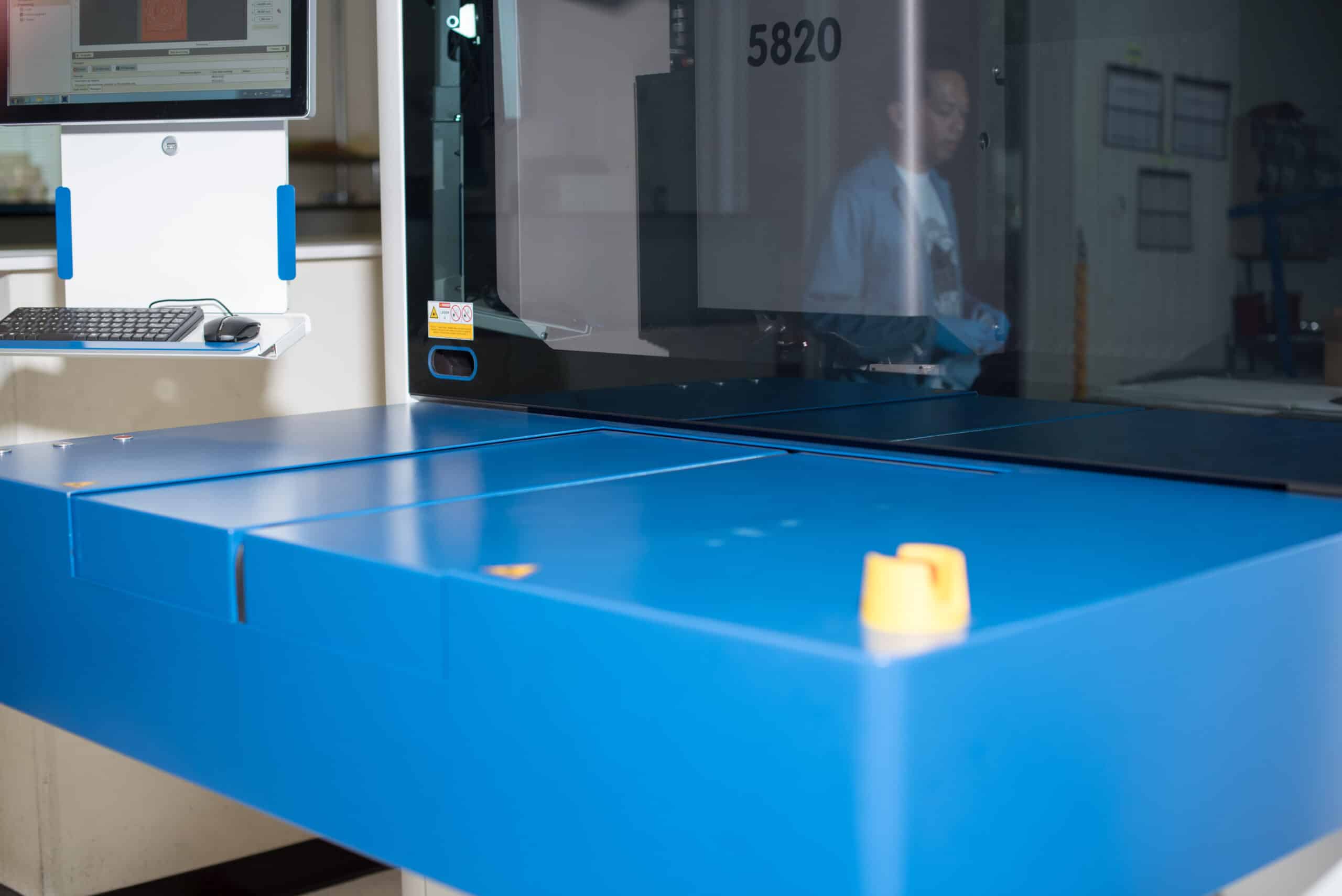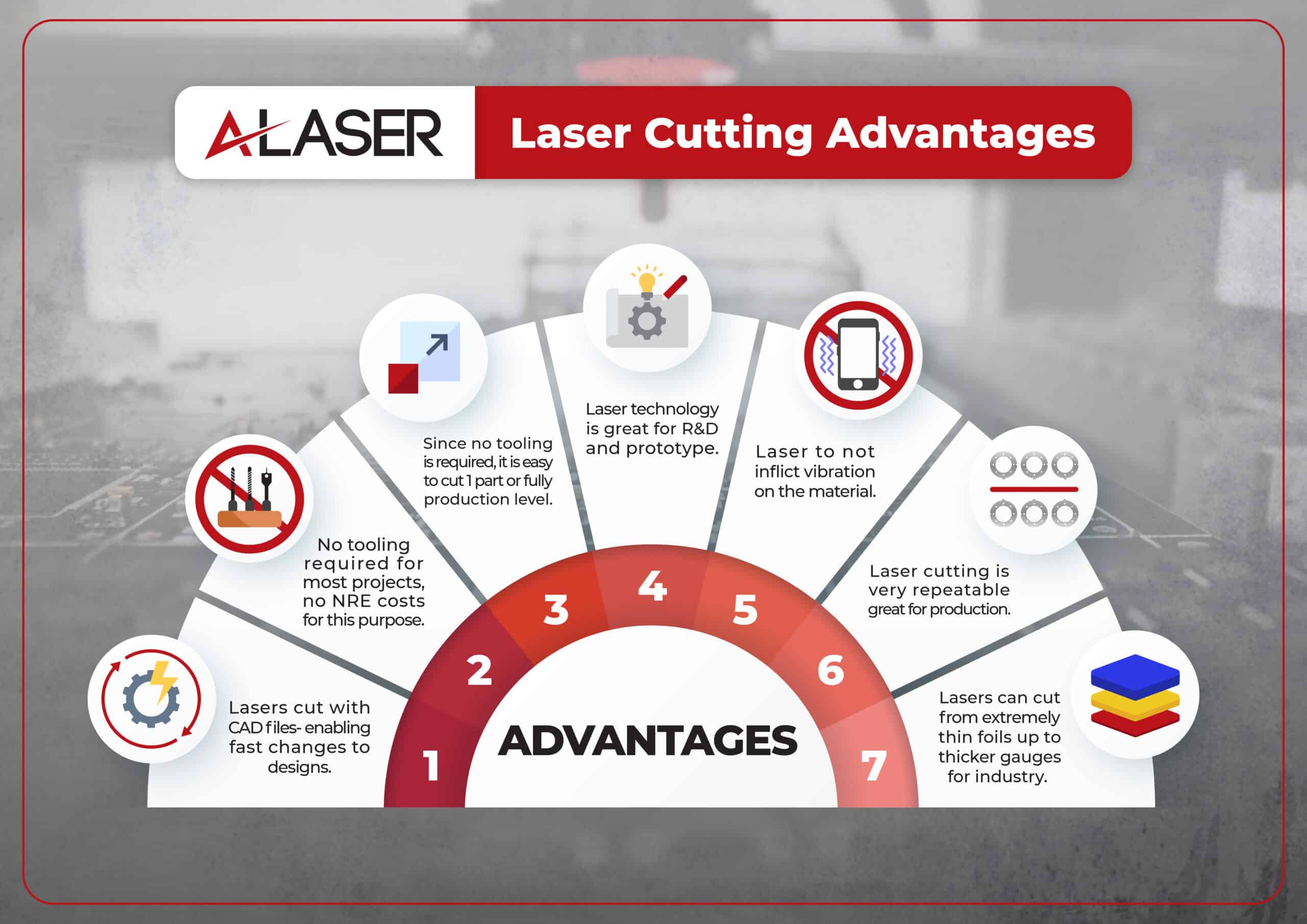Laser Cutting
Precision, Efficiency, and Versatility
The Challenge of Precision Manufacturing
In industries ranging from electronics to aerospace, manufacturers face increasing demands for precision and speed. With traditional cutting methods, it’s hard to meet the tight tolerances and intricate designs required by today’s advanced components. How do you ensure quality, especially when working with challenging materials like metals, plastics, or composites?
The solution lies in laser cutting—a technology that has revolutionized precision manufacturing. Laser cutting offers unmatched accuracy, minimal material waste, and the ability to handle a wide range of materials and thicknesses. Whether you’re creating medical devices, PCBs, or aerospace parts, laser cutting provides a precision solution that can meet very tight tolerances.

Types of Laser Cutting Technologies
Not all lasers are created equal. Different types of lasers are suited for specific materials and applications.
Lasers used in manufacturing vary in three primary aspects:
- Wavelength: This refers to the laser’s energy type, typically ranging from UV to IR light.
- Pulse Rate: The frequency at which the laser is pulsed, ranging from milliseconds to femtoseconds, impacts precision and heat-affected zones.
- Laser Medium: The material or process used to generate the laser beam, such as fiber or CO2, affects performance based on the material being cut.
Understanding these differences is essential to selecting the right laser for your application.
| Laser Type | Wavelength | Materials | Pulse Rate | Active Laser Medium | Strengths | Limitations |
|---|---|---|---|---|---|---|
| UV Laser | 355 nm | Plastics, ceramics, glass, thin metals | Millisecond, nanosecond, picosecond, femtosecond | Gallium Nitride | Fine detail, minimal heat damage | Limited depth, slower cutting speeds |
| Near IR Laser | 1064 nm | Metals, ceramics | Nanosecond, picosecond, femtosecond | Fiber | General-purpose, versatile | Can cause thermal stress in heat-sensitive materials |
| Far IR Laser | 10640 nm | Metals, plastics | Nanosecond, picosecond, femtosecond | CO2 | High efficiency, excellent for metals | Less effective on non-metals |
Choosing the Right Laser Cutting Technology for Your Application
Selecting the appropriate laser cutting technology depends on the material you’re cutting, the precision required, and the speed of production. Here’s a breakdown of the best laser technologies for various applications:
1. Metals (Stainless Steel, Nickel, Molybdenum)
- Best Laser: Fiber Laser
- Why? Fiber lasers offer high efficiency and precision when cutting metals. They are particularly effective for reflective materials like stainless steel, nickel and molybdenum providing clean cuts with minimal thermal distortion.
2. Non-Metallic Materials (Plastics, Wood, Glass)
- Best Laser: CO2 Laser
- Why? CO2 lasers excel in cutting non-metallic materials due to their long wavelength, which is absorbed effectively by organic materials. This makes them ideal for high-speed cutting of plastics, wood, and glass.
3. Delicate, Heat-Sensitive Materials (Ceramics, Thin Films)
- Best Laser: UV Laser
- Why? These lasers operate with shorter wavelengths and ultrafast pulses, reducing the heat-affected zone and preventing damage to sensitive materials.

